
Art museums, science centers, parks, zoos, aquariums – these places share a common thread in that they are fully immersive environments that encourage individuals to follow his/ her/ their own path, exploring, discovering, and learning.
Then, Meow Wolf.
Take the concept of immersive learning and infuse it with powerful storytelling, artistic expression, unbound creativity, and fierce playfulness. Then crank it to eleven. THAT is Meow Wolf. Katie and her son recently discovered Meow Wolf in Santa Fe, New Mexico. Take it away, Katie!
Meow Wolf: House of Eternal Return. Crazy name for an art exhibit, right? Turns out it’s not only crazy, it is a hands-on, completely captivating, artist inspired, mystery to be solved, fantastical world, storytelling experience that’s *really* hard to explain to someone who hasn’t been there. With that said, I’m going to try to explain it, because I was absolutely blown away by this place.
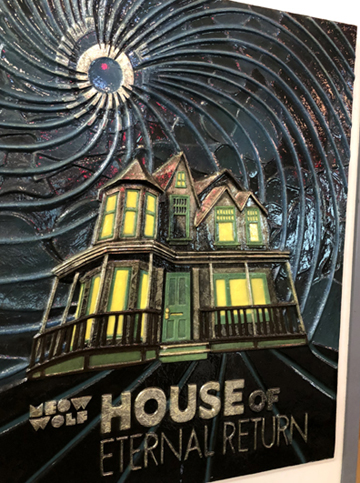
Some history about Meow Wolf: it was formed in 2008 by a group of 12 artists living in Santa Fe, New Mexico, who chose their name by literally pulling words out of a hat. Now operating as an art collective of nearly 200 people, they create unique art experiences for audiences of all ages, or as they so wonderfully describe their vision on their website: “Meow Wolf champions otherness, weirdness, challenging norms, radical inclusion, and the power of creativity to change the world.”
With support from Game of Thrones author and Santa Fe resident George R. R. Martin, who purchased a defunct bowling alley and leased it to the group, Meow Wolf turned the once forgotten building into a permanent art exhibit, House of Eternal Return, which opened in March 2016.
 Employees working the House of Eternal Return ticket counter encourage you to touch everything, explore everywhere, and fully engage yourself within the over 20,000 square foot exhibit.
Employees working the House of Eternal Return ticket counter encourage you to touch everything, explore everywhere, and fully engage yourself within the over 20,000 square foot exhibit.
When you enter, you are immediately greeted by a massive two-story Victorian mansion owned by the fictional Selig family, who vanished after conducting forbidden experiments inside the home. If you look closely at the house, you’ll see small credits given to George R. R. Martin. Wolves and dragons appear in the scrawling woodwork. The front doormat reads “Beyond Here There Be Dragons.”
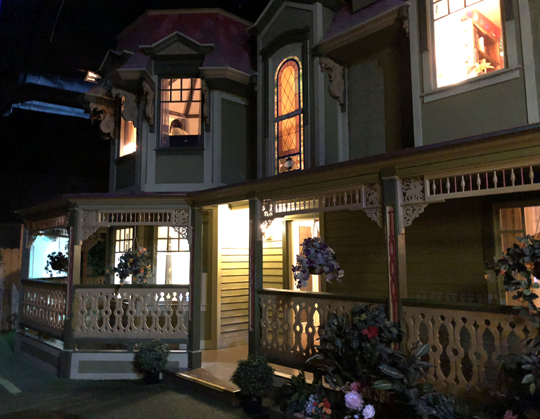 You start investigating the mystery of the Selig family disappearance by finding a mailbox and reading messages written on the cards inside. The cards provide hints and clues to search for while you wander through the maze of rooms and hallways.
You start investigating the mystery of the Selig family disappearance by finding a mailbox and reading messages written on the cards inside. The cards provide hints and clues to search for while you wander through the maze of rooms and hallways.
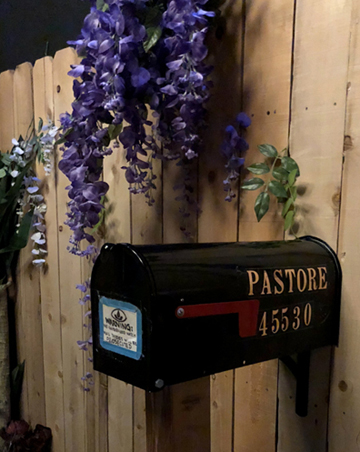 Deeper inside the exhibit, there’s a mechanical raven (another Game of Thrones nod, perhaps?), which occasionally flaps its wings and chatters at the visitors below.
Deeper inside the exhibit, there’s a mechanical raven (another Game of Thrones nod, perhaps?), which occasionally flaps its wings and chatters at the visitors below.
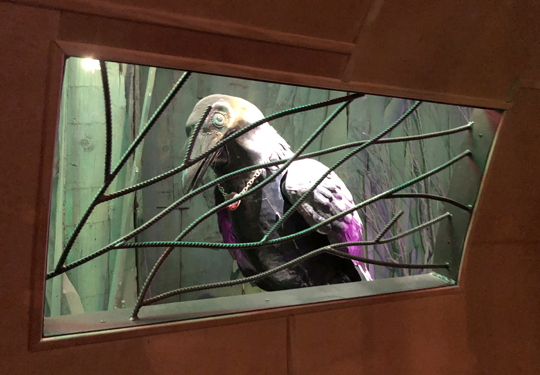 My son and I spent nearly four hours wandering through the House of Eternal Return. The exhibit has dozens of hidden doors and portals to unique and fascinating places, which through the story strangely connect in some weird way to each other. Crawling through the fireplace brings you to a cave where you can play music on the rib bones of a giant glowing mastodon.
My son and I spent nearly four hours wandering through the House of Eternal Return. The exhibit has dozens of hidden doors and portals to unique and fascinating places, which through the story strangely connect in some weird way to each other. Crawling through the fireplace brings you to a cave where you can play music on the rib bones of a giant glowing mastodon.
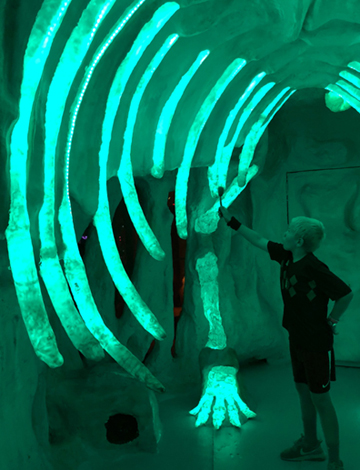 Walking through the open door of an ice machine takes you into a room full of lights and mirrors, where you push buttons to change the lights and play different notes of music.
Walking through the open door of an ice machine takes you into a room full of lights and mirrors, where you push buttons to change the lights and play different notes of music.
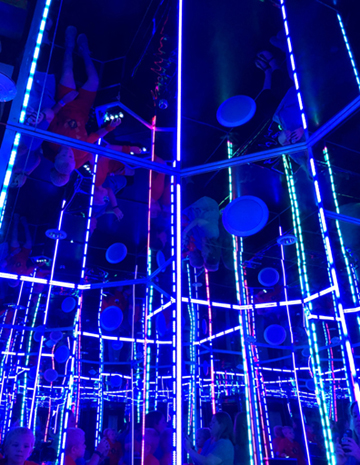 Going through the refrigerator leads you down a sterile white hallway into what appears to be a rocket ship, ready to take you to futuristic tropical destinations.
Going through the refrigerator leads you down a sterile white hallway into what appears to be a rocket ship, ready to take you to futuristic tropical destinations.
 There are also strange space monsters that blink their eyes at you when you walk by.
There are also strange space monsters that blink their eyes at you when you walk by.
 Walls of fabric that reveal an ever-changing light show when you touch it (or floss dance between the wavy cloth).
Walls of fabric that reveal an ever-changing light show when you touch it (or floss dance between the wavy cloth).
You can also try stuffing yourself down the slide portal inside the dryer, which ends in a small room with walls completely covered in laundry. For those of you wondering, yes, I did manage to squeeze my way into the dryer, much to my son’s amusement. There is another door into (or out of) the laundry room, but my son and I couldn’t figure out where it was after leaving the room.
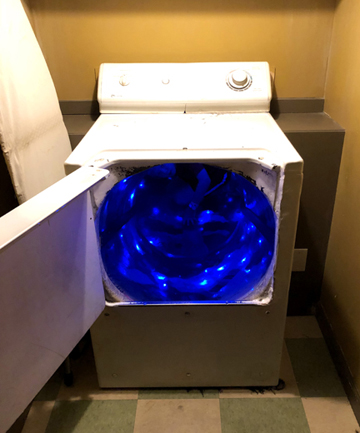 The entire exhibit is a mystery you have to attempt to solve, but honestly, I don’t believe there is one definite solution. Visitors interpret art differently, so what one person thinks is the answer, another may believe something completely different.
The entire exhibit is a mystery you have to attempt to solve, but honestly, I don’t believe there is one definite solution. Visitors interpret art differently, so what one person thinks is the answer, another may believe something completely different.
I can’t say enough about the House of Eternal Return: it is a must-see place. This post barely scratches the surface with all there is to see and experience. Pictures really don’t do it justice because everywhere you look, there’s something distinctly different and jaw-dropping. It’s funky and fun, inspiring and incredible. If you are in Santa Fe and visit Meow Wolf, plan on spending many hours exploring and getting lost within this one-of-a-kind immersive art labyrinth.
I can’t WAIT to go back.

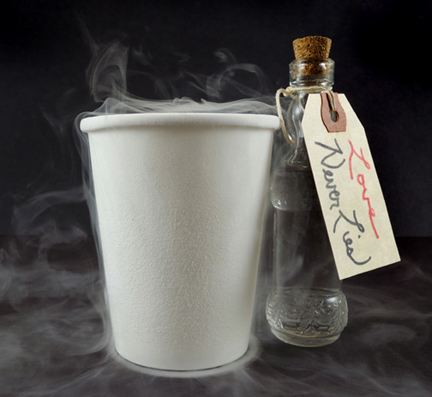
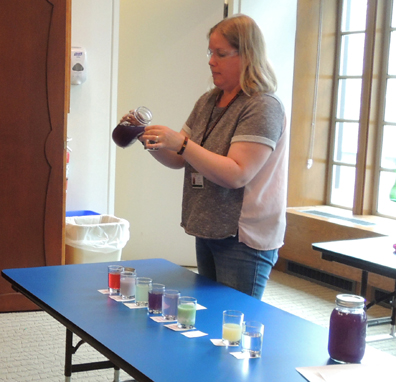 The red cabbage indicator demo is simple, inexpensive, but impactful. The experiment involves adding red cabbage juice to various household acid and bases, and then observing how the acids and bases change color according to their pH level. Katie used
The red cabbage indicator demo is simple, inexpensive, but impactful. The experiment involves adding red cabbage juice to various household acid and bases, and then observing how the acids and bases change color according to their pH level. Katie used  Wearing gloves, wielding protective eye gear, and armed with her knowledge of nitrogen-infused particles, Katie froze balloons, carnation flowers, and made clouds. It was AWESOME.
Wearing gloves, wielding protective eye gear, and armed with her knowledge of nitrogen-infused particles, Katie froze balloons, carnation flowers, and made clouds. It was AWESOME.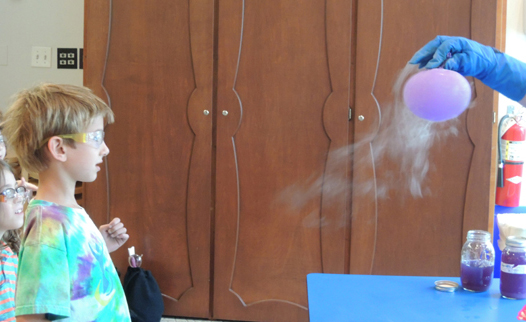
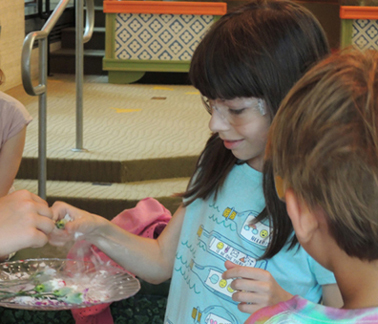
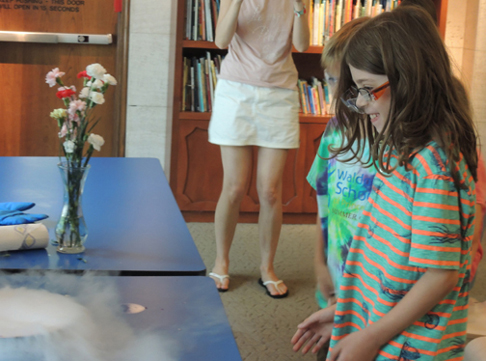 The grand finale was mixing your very own bottle of “Love-Never-Lies” potion to take home. Katie purchased some 5″ vintage replica bottles with corks from Amazon (10 bottles cost $20). These are the same bottles we used with much success for our Sherlock Holmes
The grand finale was mixing your very own bottle of “Love-Never-Lies” potion to take home. Katie purchased some 5″ vintage replica bottles with corks from Amazon (10 bottles cost $20). These are the same bottles we used with much success for our Sherlock Holmes 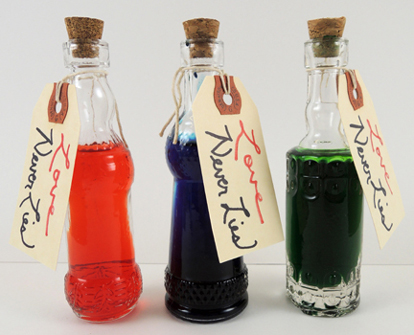 Katie filled the bottles with water, and then kids came forward to choose the color and amount of food dye for Katie to drip into the bottle. As the colors mixed, the kids predicted the final color of the potion.
Katie filled the bottles with water, and then kids came forward to choose the color and amount of food dye for Katie to drip into the bottle. As the colors mixed, the kids predicted the final color of the potion.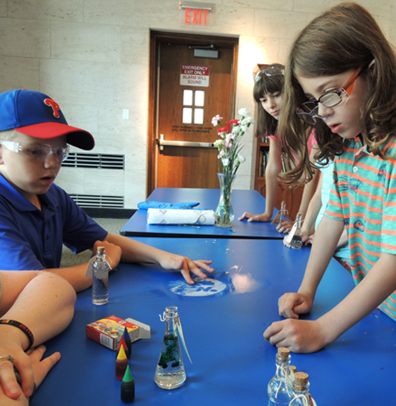 Cressida Cowell is also the author of the How to Train Your Dragon series. If you’d like to see what we did with that book, you’ll find the post
Cressida Cowell is also the author of the How to Train Your Dragon series. If you’d like to see what we did with that book, you’ll find the post 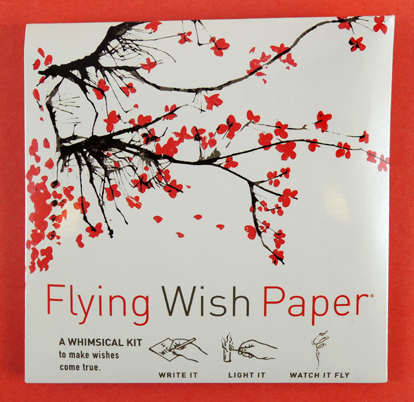 No, it’s not the name of my new romance novel. It’s this…Flying Wish Paper by Hux Creative! Write a wish on the special paper, ignite it, and watch your wish float away, granted. Does this kit actually work? Or will the fickle realities of wish-granting manifest themselves? Our brave yet tempestuous heroine, Katie, tempted cruel fate and tested the kit in her dining room. Take it away Katie!
No, it’s not the name of my new romance novel. It’s this…Flying Wish Paper by Hux Creative! Write a wish on the special paper, ignite it, and watch your wish float away, granted. Does this kit actually work? Or will the fickle realities of wish-granting manifest themselves? Our brave yet tempestuous heroine, Katie, tempted cruel fate and tested the kit in her dining room. Take it away Katie!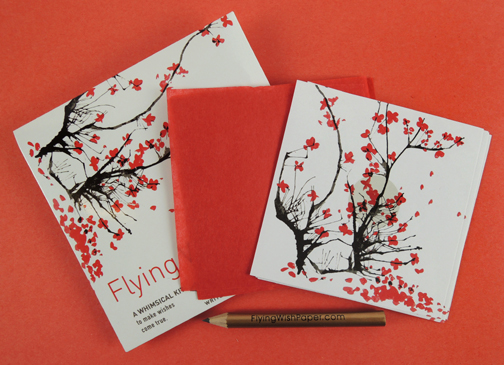 The kit contains 15 sheets of Flying Wish Paper, 5 paper platforms for your wishes, a special mini pencil, and a set of instructions. It retails for $12 at our local Paper Source. The first part of the kit is easy enough. You think of a special wish and write it on the Flying Wish Paper, which closely resembles tissue paper. If you choose, you can slide the Wish Platform (more on that shortly) under your Wish Paper to help you write more easily. Our Wish Platform had a gorgeous picture of blossoming cherry trees on it, but there are many other images in different kits to choose from.
The kit contains 15 sheets of Flying Wish Paper, 5 paper platforms for your wishes, a special mini pencil, and a set of instructions. It retails for $12 at our local Paper Source. The first part of the kit is easy enough. You think of a special wish and write it on the Flying Wish Paper, which closely resembles tissue paper. If you choose, you can slide the Wish Platform (more on that shortly) under your Wish Paper to help you write more easily. Our Wish Platform had a gorgeous picture of blossoming cherry trees on it, but there are many other images in different kits to choose from.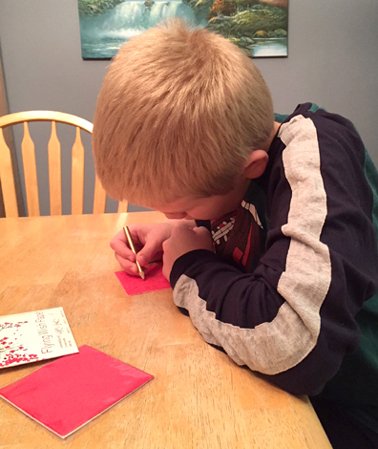 Once you have written your wish, crumble the Wish Paper into a ball about the size of a marble. Next, carefully unwrap and smooth out the paper so it is flat, albeit crinkled from being smashed into a ball.
Once you have written your wish, crumble the Wish Paper into a ball about the size of a marble. Next, carefully unwrap and smooth out the paper so it is flat, albeit crinkled from being smashed into a ball. Once the paper is flat, roll it into a tube using the darkened circle on the Wish Platform as a guide. The tube needs to be open enough to allow the Wish Paper to easily burn, just like a chimney. Stand your Wish Paper upright on the Wish Platform and you are ready to send it to the heavens!
Once the paper is flat, roll it into a tube using the darkened circle on the Wish Platform as a guide. The tube needs to be open enough to allow the Wish Paper to easily burn, just like a chimney. Stand your Wish Paper upright on the Wish Platform and you are ready to send it to the heavens!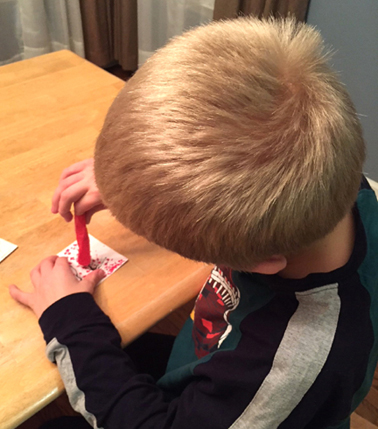 This is when I became a little nervous. I was going to light paper on fire inside of my home. Rather, I was going to let my son (who was thrilled to have full parental permission to strike a match indoors) LIGHT PAPER ON FIRE INSIDE OUR HOUSE! It took a few tries to stand the Wish Paper on the Wish Platform without it toppling over, which also made me nervous.
This is when I became a little nervous. I was going to light paper on fire inside of my home. Rather, I was going to let my son (who was thrilled to have full parental permission to strike a match indoors) LIGHT PAPER ON FIRE INSIDE OUR HOUSE! It took a few tries to stand the Wish Paper on the Wish Platform without it toppling over, which also made me nervous.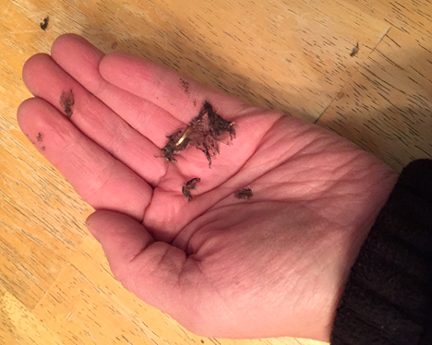 I was also fearful the burning Wish Paper would fall over, (or off!) the Wish Platform. Well, it did fall over during one of our tests. It left a small burn mark on the Wish Platform, but thankfully nothing else happened.
I was also fearful the burning Wish Paper would fall over, (or off!) the Wish Platform. Well, it did fall over during one of our tests. It left a small burn mark on the Wish Platform, but thankfully nothing else happened.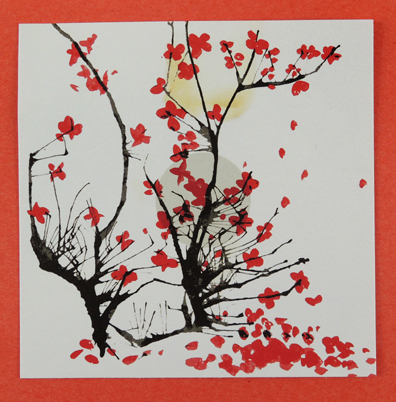 Flying Wish Paper is a fun activity that my son and I thoroughly enjoyed doing together. There are numerous fire concerns and it is definitely something parents can’t let their children do on their own, but I highly recommend it. It’s a whimsical and thoughtful activity for kids to really think about what their deepest wishes may be. It would be awesome for magic spells at a Harry Potter program too (and so would
Flying Wish Paper is a fun activity that my son and I thoroughly enjoyed doing together. There are numerous fire concerns and it is definitely something parents can’t let their children do on their own, but I highly recommend it. It’s a whimsical and thoughtful activity for kids to really think about what their deepest wishes may be. It would be awesome for magic spells at a Harry Potter program too (and so would